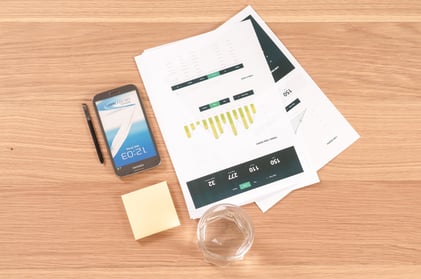 Reporting (or analytics) and data governance (or as we call it data intelligence) are related. They both deal with data requests, data quality, data lineage, data systems, information sharing and specifications (report catalog). In this post we will discuss six (6) data governance principles that need to be followed to ensure that data on the organization’s reports and dashboards are fully protected and maintained for optimal usage.
Reporting (or analytics) and data governance (or as we call it data intelligence) are related. They both deal with data requests, data quality, data lineage, data systems, information sharing and specifications (report catalog). In this post we will discuss six (6) data governance principles that need to be followed to ensure that data on the organization’s reports and dashboards are fully protected and maintained for optimal usage.
Data is an organizational asset. And data is conveyed to others via reports and dashboards. Quality data along with standard, consistent data definitions, business logic and reporting practices allow for efficient operations as well as strategic organizational decision-making. Data governance allows for data and reporting to be delivered in the most efficient and effective way. Data governance along with reporting builds relationships among stakeholders by creating a focus across subject areas that allows for new perspective and vision. Decision-making based upon a common understanding of the organization’s data is vital for successful organizational initiatives. Data governance increases the trust in the data on the reports, provides a better understanding of the data and speeds the delivery of new reports. Often, the data on an organization’s reports and dashboards contains sensitive information about customers, employees, and the organization. Data intelligence and data governance plays an important part in protecting this sensitive information.
Following are different data governance principles that need to be adhered to, for a proper and functional data management of reports and dashboards. These principles include report/dashboard ownership and provide information such as data sources, quality, validity, and protection around data including its lineage and relevance. Abiding by these principles will help organizations gain a better view and control over information used for critical decision making.
- Have a data request process so new reports and dashboards can be created quickly or that others can be updated and improved. Additional data request resources can be found here.
- Reports and dashboards should be documented (what we call a specification). In this document there should be the clear owner of the report. The specification should exist in an accessible report catalog (data processing catalog) containing information on who requested report, purpose of report and the information that is on the report. The specification should contain the functional and technical metadata and should be accessible from the report or dashboard. This is so that the user can quickly retrieve information for better understanding. Access to the recording of a specifications best practices webinar can be found here.
- Data lineage must be captured and viewable as the users of the reports need to understand this lineage. Data elements on reports and dashboards can come from multiple data systems and may have gone through a transformation. Access to the recording of the tracking data lineage webinar can be found here.
- Data systems should be inventoried and have an owner assigned to them. And users should know how to ask for access to these data systems. You want to educate your users on the data in the organization. Users need to understand what data they have available from internal and external sources which will help in reporting. Additional data system inventory resources can be found here.
- Data quality and trust in the information on the report and dashboard is important. Therefore, data quality rules must be established. When data quality issues are seen in reports and dashboards users need a way to report these issues and there must be a process to resolve these issues. Additional data quality resources can be found here.
- If a report or dashboard is to be shared with others outside of the organization then there needs to be a data sharing agreement in place. And these agreements should be reviewed and updated regularly. More about data sharing agreements can be found here.
Data governance and reporting are related and work well together. In fact, data governance is critical for reporting and dashboard success. If you cannot trust the data on the report then the report is worthless or harmful to the organization. Hope that this blog post was beneficial to you and your organization.
Other data governance and reporting resources can be found here.
IData has a solution, the Data Cookbook, that can aid the employees and the organization in its data governance, data intelligence, data stewardship and data quality initiatives. IData also has experts that can assist with data governance, reporting, integration and other technology services on an as needed basis. Feel free to contact us and let us know how we can assist.
Photo Credit:StockSnap_LABXT2BYKU_reportsdashboards_BP #B1160

